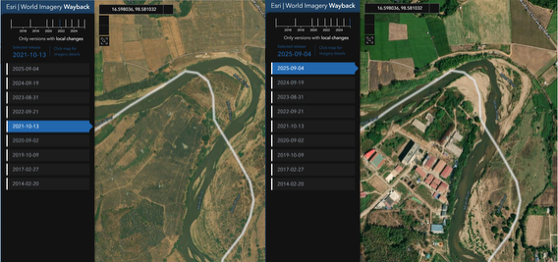BioCatch customers around the world reported 65% more scams in 2025 than they did in 2024. Our recently released Global Scams Report unpacks much of the why behind this worldwide spike, but I wanted to use this space to examine scam activity in the U.S. and Canada in a bit more detail.
Reported scams in these countries have more than quadrupled since 2023, but volume only tells part of the story. We must also consider velocity. Scammers have weaponized their trade, blending automation, AI-amplified voice cloning, and scripted social engineering to outpace both consumer awareness and bank defenses.
For fraud teams, this isn’t another cycle of new scam types. It’s a pivot in how fraud operates. Scams today are faster, more adaptive, and more personalized. The line between fraud and social engineering has blended to the point where many authorized payments are no longer truly legitimate — even if they pass every control on the books.
The volume surge
Over the last three years, U.S. and Canadian banks have reported exponential scam growth that rewrites the baseline for reported scam claims in their countries. Our 2025 Digital Banking Fraud Trends in the U.S. report documented a 168% increase in reported U.S.-based money mule accounts (used by scammers to launder the proceeds of their scams).
Scam growth is outpacing every other fraud typology thanks to two systemic shifts: 1.) instant payments and 2.) public facing communication channels.
Instant payment rails like Zelle, RTP, and Interac e-Transfer have given bad actors what they always wanted: speed, realness, and zero claw-back. Once the payment leaves the financial control of the bank, there’s no undo button. Concurrently, fraudsters have industrialized scam factories, moving from individual texts to full contact centers complete with spoofed caller IDs and scripts that mimic bank support desks.
The result: a massive increase in scam volume that crosses demographics, income brackets, and device types. No one is too savvy to fall victim. The scammer tactics of today are simply that persuasive and realistic.
The big three
While scams of all types have surged in the U.S. and Canada, three scam types continue to account for the majority of losses: purchase scams, impersonation scams, and vishing scams. Each tells a different story about how the fraudsters of today excel at nimbly pivoting their attacks to circumvent new countermeasures
- Purchase scams: The volume engine of the scam economy
Purchase scams now account for nearly half of all reported scams across the U.S. and Canada. Banking capabilities built for customer convenience make for soft targets if banks don't also install durable and sustainable controls. Fraudsters utilize online marketplaces, peer-to-peer payments, social media listings, etc. To post fake listings, take immediate payments, and then vanish prior to detection.
For many first-time fraudsters, purchase scams are their gateway crime. These scams are relatively simple to execute, nearly untraceable, and highlight profitable. The same fraud networks that once specialized in carding now specialize in fake e-commerce listings. As legitimate e-commerce platforms have tightened listing verifications, these fraud groups have pivoted to messaging apps and instant payment links where fraud signals are all but invisible to banks. - Impersonation Scams: On the decline but certainly not contained
Reported impersonation scams (where scammers trick victims into believing they’re speaking with a representative from their bank, government agency, or trusted company) have declined in the U.S. and Canada. Some of this progress reflects real control gains, better customer education, stronger caller verification, and early behavior-based detection by financial institutions.
But a drop in volume doesn’t mean we’ve solved the impersonation scam problem. We’re far from that. Fraudsters have moved from broad-based impersonation to more personalized, hybrid scams that mix channels and build rapport with victims. For example, a victim might receive a text followed by a phone call, or a fake help desk chat that transitions to a live but not legitimate agent.
Each touchpoint builds false credibility and trust, creating a more dangerous form of social engineering that traditional fraud defenses still struggle to spot. - Vishing: Invisible until it’s too late
No scam type in the U.S. or Canada increased more in the last year than vishing. BioCatch customers reported 15 times more vishing attacks this year than they did in 2025, and it’s easy to see why. Voice remains the most emotionally manipulative channel. When paired with spoofing and AI voice cloning, it’s devastatingly effective.
A typical vishing session today might begin with a text:
Did you attempt this $1,200 payment?
The potential victim then receives a voice call from a number that appears to match the bank’s contact center. The caller sounds calm and professional and asks to guide the accountholder through a series of steps to verify their identity. In reality, those steps lead the potential victim toward willingly transferring their money to the scammer. Every instruction sounds and feels legitimate. By the time the victim hangs up, their balance is gone.
“Other:” You can’t mitigate what you can’t measure
A large percentage of reported scams fall into categories banks label as “other,” “unclassified,” or “unknown.” Seasoned fraud practitioners recognize these buckets as a significant problem and signs of a systemic gap.
It’s not that analysts don’t know what happened when these “other” scams occur. It’s that the Enterprise Case Management System (ECM) doesn’t give them an applicable drop-down option for many of the scams analysts are seeing. Missing scam subtypes push legitimate cases into these undefined categories, hiding the loss trends from view.
The good news is that those unclassified cases are declining. Data shows a 16% decrease in unclassified scams in the U.S. and Canada, suggesting more banks are improving internal tracking and scam-reimbursement workflows. That’s progress worth noting. Every percentage point recovered here grants fraud teams a clearer view of where and how the next wave of scams might hit.
The front end of fraud
Scams represent more than mere consumer losses. They’re the front end of the fraud supply chain.
Every successful scam creates a downstream impact: mule accounts, money laundering, and other regulatory risk — to say nothing of the transnational organized criminal operations behind the majority of the world’s scamming today. When banks reimburse victims but fail to properly trace the illicit funds, they often end up paying twice: once by paying the claim and again in potential fines from regulators and reputational damage.
Scams live in the gray zone between authorized and unauthorized fraud. Fraud teams have historically focused on stopping unauthorized transactions, honing their efforts on compromised credentials, malware, and stolen devices. Now, the credentials, devices, and multi-factor authentication are all legitimate. The manipulation is psychological, not technical.
That’s why post-login visibility is now absolutely critical. Today, fraud risk doesn’t stop at log-in. That’s where it starts. The ability to detect coached behavior, hesitation patterns, and/or remote-access manipulation during a live session is now the difference between real-time detection and a painful postmortem on losses.
From recovery to detection
In both the U.S. and Canada, regulators are tightening expectations around scam liability and reimbursement. Canada’s Payments Modernization roadmap and U.S. discussions around authorized push payment (APP) accountability make it clear the industry is moving from victim recovery to proactive detection.
To get ahead, banks should continue efforts to:
- Build scam-specific playbooks that focus on real-time detection instead of costly recovery efforts with low rates of success
- Integrate behavioral and device intelligence into continuous monitoring
- Enhance customer messaging strategies that intercept scams mid-conversation instead of after the loss
The goal is to shift from “Did we reimburse?” to “Did we detect in real time?”
Read the intent, not the transaction
Scams have become the fraud vector of choice by exploiting human trust.
Education and reimbursement policies are part of the answer, but the most effective defense is understanding user intent to distinguish a confident, self-initiated payment from a payment made via coaching or manipulation by a third party.
In a world where every payment looks authorized, behavior is the last line of truth. Whether through hesitation, erratic typing, or remote access signals, human behavior still exposes fraud, but only if banks continue their monitoring after login.
The U.S. and Canadian markets may differ in regulation and payment infrastructure, but the lesson for both geographies remains the same: Fraud doesn’t start with stolen data anymore. It starts with persuasion. And if we want to stop it, our fraud defenses must learn to see intent and not just credentials.
For an in-depth look at scams in Latin America, read Josue Martinez's piece here.
For scams in the Asia Pacific region, read Subhashish Bose's piece here.
For scams in Europe, the Middle East, and Africa, read Jonathan Frost's piece here.
To download our 2025 Global Scams report, click here.



